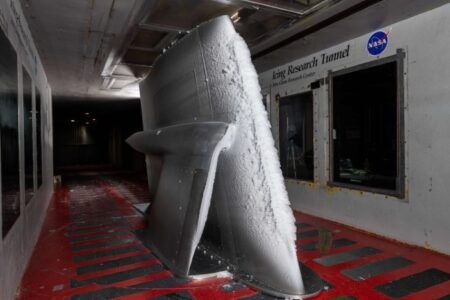The crash test took place this month at the Landing and Impact Research Facility, also known as the gantry, at NASA’s Langley Research Center in Hampton, Virginia as part of testing for new crash-worthiness guidelines.
The 33,000-pound Fokker F-28, the largest airframe ever dropped at Langley’s gantry, was hoisted more than 150ft into the air for the test.
This latest test was one in a series on which NASA and the FAA have partnered. “The FAA is in the process of establishing new guidelines for transport-category aircraft and their crash-worthiness,” said Martin Annett, structural dynamics branch head at Langley.
To acquire the necessary critical data for the test different types of crash test dummies ranging in size from a 3-year-old child to an obese male weighing more than 270 pounds were used.
“It’s a common misconception that plane crashes are not survivable, when in fact many are,” said Pellettiere. “Looking at the response of the plane, how it crushes in the dirt, as well as the kinematics of the crash test dummies inside helps us know as much as possible to make them as safe as possible.”
One type of crash test dummy on board the aircraft was a device created by the US Army. Called the Warrior Injury Assessment Manikin, or WIAMan for short, this dummy was designed to understand the forces exerted on the human body from an explosion underneath a vehicle.
Terry Holdren, US Army WIAMan project coordinator said, “The unique ability of WIAMan to gather data on force, or load, being applied to the body from underneath also provides a valuable tool when studying an aircraft crash. We are excited and proud to be working with the FAA and NASA to help make aircraft crashes safer.”
Inside the aircraft were dozens of high-definition cameras and high-speed cameras used to observe how each different kind of dummy responds during the crash. Outside, the Fokker was covered with hundreds of black dots to allow for a full field photogrammetry experiment to be conducted.
Following the crash, the National Transportation Safety Board will conduct dimensional scans of the aircraft to compare its pre- and post-test structure. All of the crash test dummies will be removed and the wreckage dispositioned.




